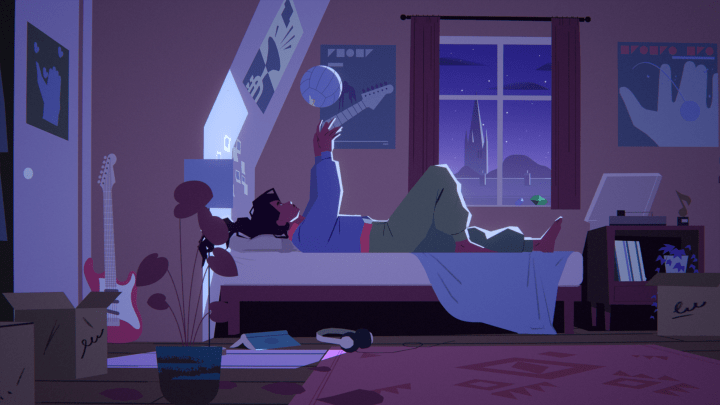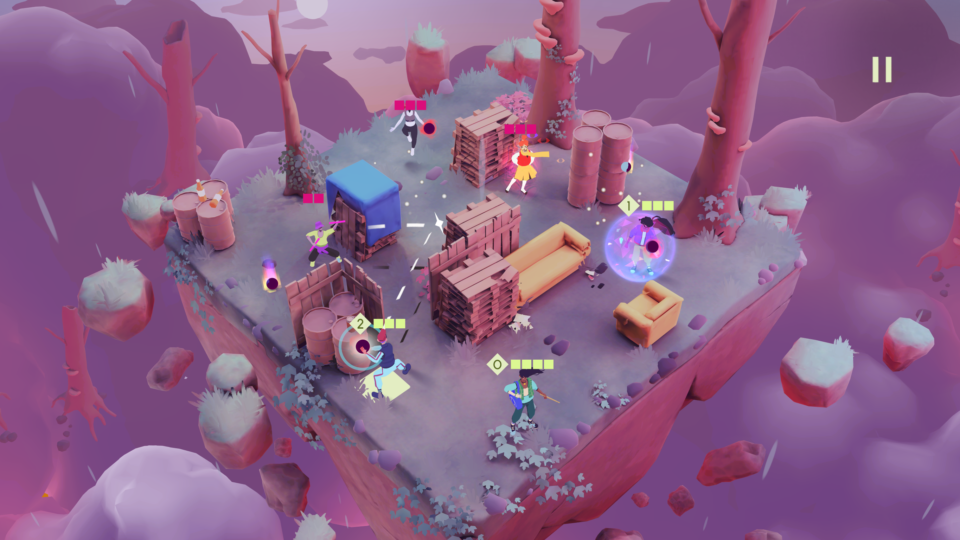Desta: The Memories Between
“Desta: The Memories Between is a touch thin at launch, but it packs in”
pros
-
Relatable, human story
-
Intuitive mobile controls
-
Surprisingly nuanced tactics
cons
-
Unnecessary roguelite aspects
-
Thin at launch
Netflix is not kidding around when it comes to mobile games. While its initial push into the space underwhelmed with a lackluster selection of titles, the subscription service has gone from 0 to 60 in the past few months. Subscribers have been treated to an excellent assortment of gamesfrom exclusives like Poinpy and lucky lunato ports of indie darlings like Into the Breach.
Now, it can add another hit to its list. Desta: The Memories Between is the latest game from Ustwo, the developer behind Monument Valley. It’s a cross between a narrative game about returning home, a grid-based tactics title, and a dodgeball game — all with some small roguelite hooks and live-ops support. It’s a unique experience that’s custom-built for mobile devices with tactile controls and quick levels.
It’ll come to Steam and Nintendo Switch in the coming months, but it’s launching exclusively on Netflix today. While it’s a brief experience at the moment with some overworked genre hooks, it’s a strong addition to Netflix’s growing library of gems. If you have a Netflix account, don’t be part of the 99% of users who are reportedly missing out on titles like this.
Dodge this
Desta: The Memories Between is about a non-binary protagonist named Desta who returns to their hometown after a long absence. Desta is understandably anxious about the trip, worried about what all the townie friends they left behind will have to say to them (not unlike the Tribeca Fest-winning Thirsty Suitors). Those fears begin creeping into their dreams, as their nights are filled with imaginary confrontations against old pals, teachers, and more.

Desta’s story is a relatable one, even if the short game doesn’t dive too deeply into their psyche. We see their worries projected onto the town’s colorful cast of characters, with each one revealing another piece of Desta’s history. It’s a story told entirely through a character’s subconscious where players have to sort through what’s true and what’s a distortion of reality caused by anxiety.
As you might expect from a dream, those conflicts aren’t presented in a straightforward way. They unfold via a series of dodgeball games that take place in small, diorama-like recreations of Desta’s hometown. In these grid-based battles, players get two actions per character on every turn. Action points can be spent to move, throw a ball, or pull off a special move like charging up a ball so it’ll do two points of damage instead of one. It’s a smart fit for the narrative, as what was once a friendly childhood game mutates into a life or death affair for Desta’s social life.

What’s impressive here is how Ustwo has miniaturized the tactics genre, turning it into something that’s both intuitive and easily digestible. Mobile is an excellent fit for the game especially, as the tactile controls are all easy to pick up. Moving is as simple as tapping a square and throwing a ball just requires pulling back on the screen with a swipe and lining up a shot. There’s a simple satisfaction that comes from launching a ball just right so it bounces off of two townies and lands back in your hands, ready for a second shot.
Dream tactics
While Desta keeps the core hook simple (even late stages only have three or four enemies with a few hit points), there’s a fair amount of nuance to it by the end of its seven chapters. The game uses a slight roguelite structure, where Desta gains random bonus actions and special items each run. There are six other characters that eventually join Desta’s party too, each with their own ability that brings strategic twists.
It’s the right level of strategy and team synergy for a micro-scale game like this.
When I beat the story, it was with one high HP teammate who could throw a retaliating shot when hit, and another that would give a teammate extra AP by passing the ball to them. I equipped Desta with a passive ability that would give them a shield while holding a ball. With that dynamic, I had my support player strategically hiding behind cover and passing balls to the other two, keeping Desta protected at all times while allowing my “tank” to charge into battles and draw hits. It’s the right level of strategy and team synergy for a micro-scale game like this.
The only thing that doesn’t quite work in the game’s hybrid-genre setup is its roguelite influence. The story operates like a “run,” where Desta needs to clear seven chapters in one go using randomly dealt perks. There’s no randomization to the stages though, so a loss just means repeating the same levels again. HP and movement upgrades carry over, and AP perks can be permanently kept between runs by using them enough, but it winds up being more of a mild annoyance in the narrative flow than a replay hook.

I’m curious to see if the game’s post-launch plans alleviate some of its shortcomings. More story, characters, and items could bring extra depth to the world, though I’m not sure they’ll justify the replay hook. Like Desta, I’m not itching to relive the same dreams over and over again, but I’m walking away from it with a sense of resolution. It’s given me an easy way to visualize the way that anxiety can distort our perception of relationships, blowing a conflict that’s easily resolved with communication into a high-stakes tactical battle. Even if it’s a little too brief to thoroughly explore that idea, I got more from my few hours with it than I would have binging episodes of Is It Cake? or I Just Killed My Dad.
Desta: The Memories Between was reviewed on an iPhone 12.
Editors’ Recommendations
